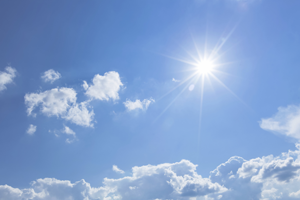Climate Adaptation – Outdoor Air Quality and Health

Ground-level ozone and particulate matter are of particular concern. Both pollutants are the result of emissions from diverse sources, travel long distances and across state lines. And both are likely to worsen with the changing climate.
Ground-level ozone
Warming temperatures complicate efforts of many communities to attain and/or maintain the health-based air quality standard.
Particulate matter
Longer and more intense droughts and extreme heat events increase the likelihood of wildfires. As a result, wildfires are expected to increase in many parts of the country. Such fires release significant amounts of particulate matter into the air and threaten public health.
